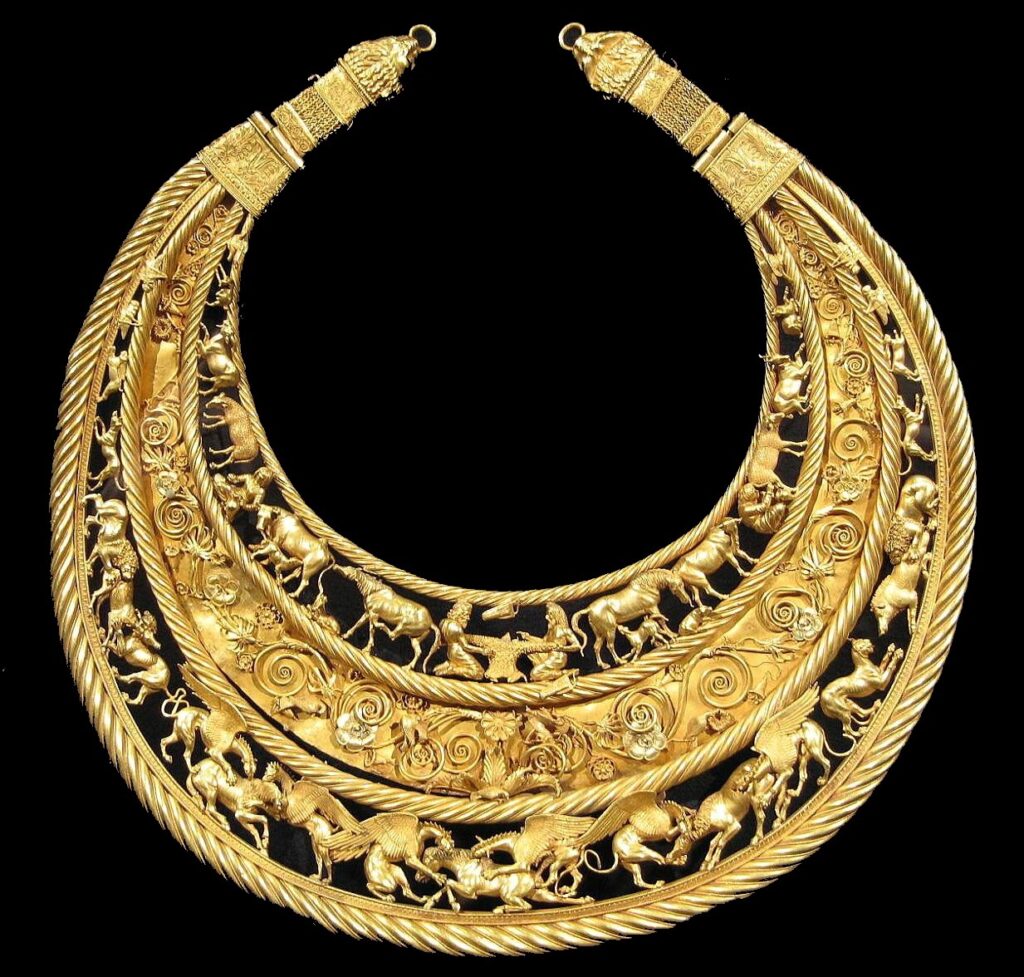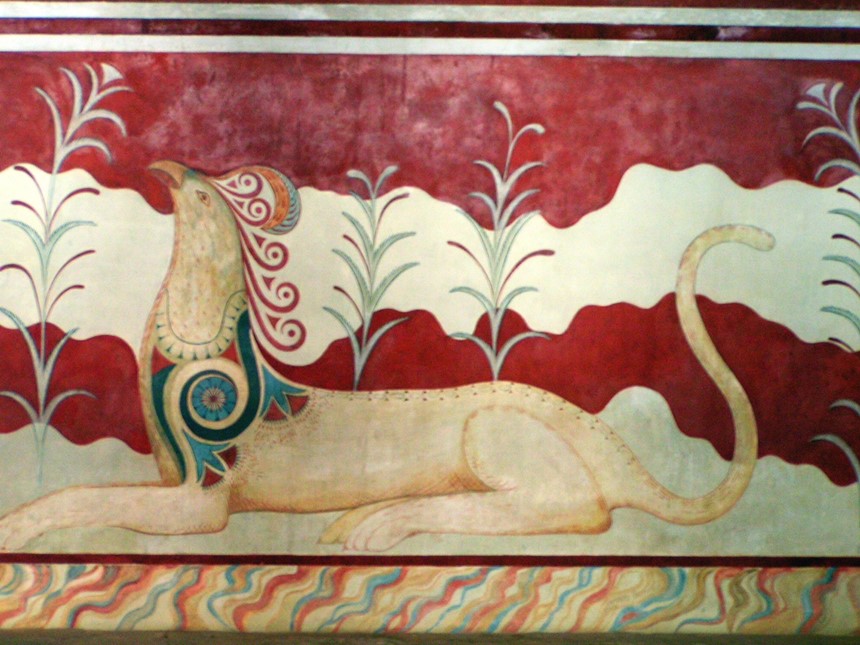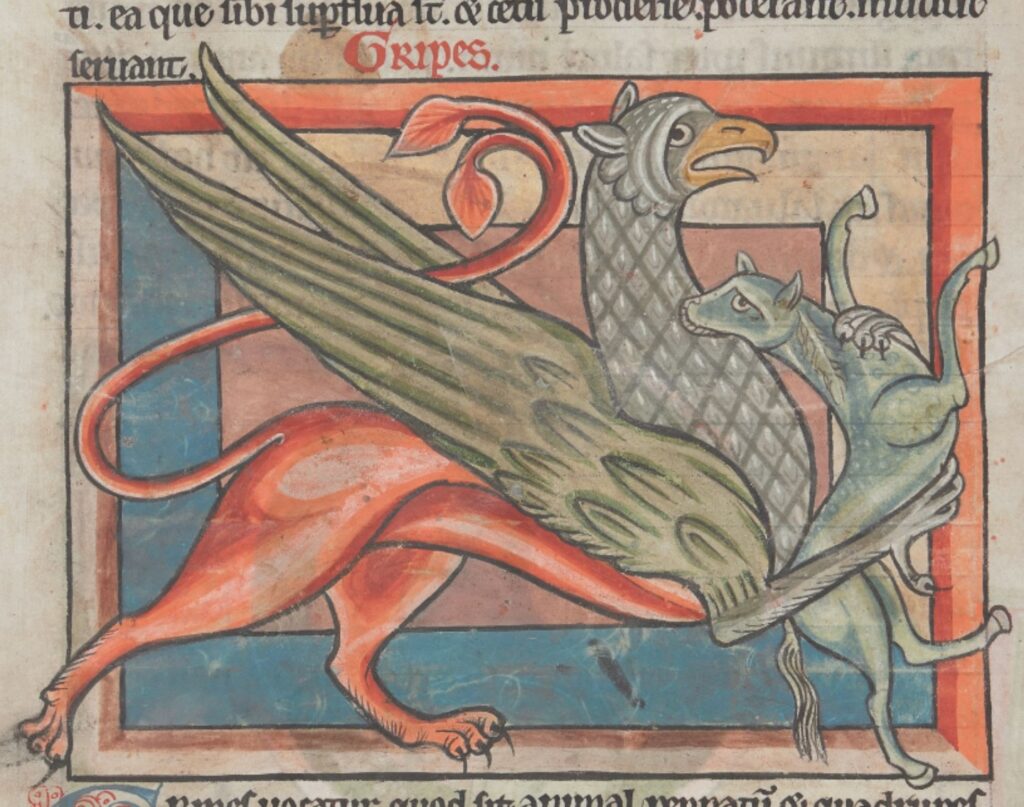Gryphons, griffins, griffons, however you prefer to spell it (I personally use gryphon) – let’s talk their folklore and mythology!

(Attic pottery depicting a satyr and a griffin and an Arimaspus from around 375-350 BC, Eretria.)
You probably already know the common popular culture concept of a gryphon: a big, vicious beast that attacks people and probably eats them and/or carries people away to its nest to feed them to its babies. Not much about it has changed in legend, though in a lot of popular culture today, it has seemed to lose its divinity. Gryphons – griffins, whatever you prefer – have quite the robust history, like so many creatures of myth and folklore. Unlike some, however, they have changed very little over time.
Note that this article a general overview of concepts, not a detailed history.
Let’s start with etymology, because I just love that stuff. The word “griffin” comes from the Greek word “gryps,” which referred to a dragon or griffin and literally meant “curved [or] hook-nosed.” Late Latin spelled it “gryphus,” a misspelling of grypus, a Latinized version of the Greek (source: https://www.etymonline.com/, one of my favorite websites).
Griffins are said to have the head and wings of an eagle and body of a lion. They may or may not also have pointed ears, depending on the depiction (they more often did, overall, though the griffin of Crete is a notable exception). They were said to guard the gold in the mountains of the north, specifically the mountains of Scythia. The one-eyed Arimaspian people rode on horseback and attempted to steal the griffins’ gold, causing griffins to nurture a deep hatred of and hostility toward horses.

A Scythian pectoral, thought to have been made in Greece, depicting – among other things – griffins slaughtering horses. Griffins really, really hate horses.

The famous griffin in the palace of Knossos at Crete, from the Bronze Age (restored).
Griffins appear in truly ancient civilizations, not only Greece but also ancient Egypt and civilizations to the east, including ancient Sumeria. Griffins were later said to also dwell in India and guard gold in that region, and they continued to appear in art throughout ancient Persia, Rome, Byzantium, and into the Middle Ages throughout other regions such as France; they were depicted in ancient Greece with relative frequency and occasionally of considerable importance.
Griffins appeared in many ancient Greek writings, including Aristeas in the 7th century BC. Herodotus and Aeschylus preserved and continued these writings in the 5th century BC, including lines such as,
“But in the north of Europe there is by far the most gold. In this matter again I cannot say with assurance how the gold is produced, but it is said that one-eyed men called Arimaspoi (Arimaspians) steal it from Grypes (Griffins). The most outlying lands, though, as they enclose and wholly surround all the rest of the world, are likely to have those things which we think the finest and the rarest.” Herodotus, Histories 3. 116. 1 (trans. Godley) (Greek historian C5th B.C.), source: https://www.theoi.com/Thaumasios/Grypes.html (a wonderful site)
Physical descriptions of the griffin were not commonplace until some later works, and even then, their appearance wasn’t always agreed upon. Even the notion of griffins having wings was sometimes disputed. Some scholars even got pretty wild, claiming griffons had no wings at all but instead skin-flaps that they used to glide. They apparently hated awesome things, so it turns out there were always boring people who thought they knew everything, wanted to explain everything “logically,” and generally assume they were the smartest ever while also ruining mystique. They would make great scientists today.
Griffins were, however, often said to be holy in nature. They were referred to as the “unbarking hounds of Zeus” by Aeschylus, who warned others never to approach them. Gryphons were also considered sacred to several gods, including prominently Apollo, who was said to depart Delphi each winter, flying on a griffon (griffin, gryphon, etc, I keep swapping this around, I know; my brain spells it differently because I’ve read way too many sources), and he also is occasionally depicted as hitching griffins to his chariot in addition to riding one. This was particularly prominent in the cults of Hyperborean Apollo, one of the many endless and fascinating cults of ancient Greece.

Medieval bestiary depiction of a griffin slaughtering a horse.
Even by the Middle Ages, gryphons still hated and slaughtered horses and guarded gold, elements that certainly persisted throughout their legends. They also killed men and carried them away to their nests, similar to the manner in which Aeschylus warned people to stay away from gryphons even back when. We can obviously assume griffons were never cuddly, so that isn’t much of a change.
Griffins also did not entirely lose their divine relations even into the Middle Ages. Christianity often used positive portrayals of griffins to represent and uphold certain positive tenets of Christian faith; likewise, they became important symbols of medieval heraldry, used to represent a Christian symbol of divine power, as well as general courage, strength, and leadership, especially in a military sense. The depiction of the griffin as a powerful and majestic creature – killing horses and men or not – throughout its history is no doubt because they are a combination of two beasts often considered noble symbols of bravery, power, and divinity: the lion and the eagle, kings of land animals and birds, respectively.
That’s a general overview! As you can see, griffins aren’t always so bad, at least not compared to some of the other creatures out there from folklore and myth.